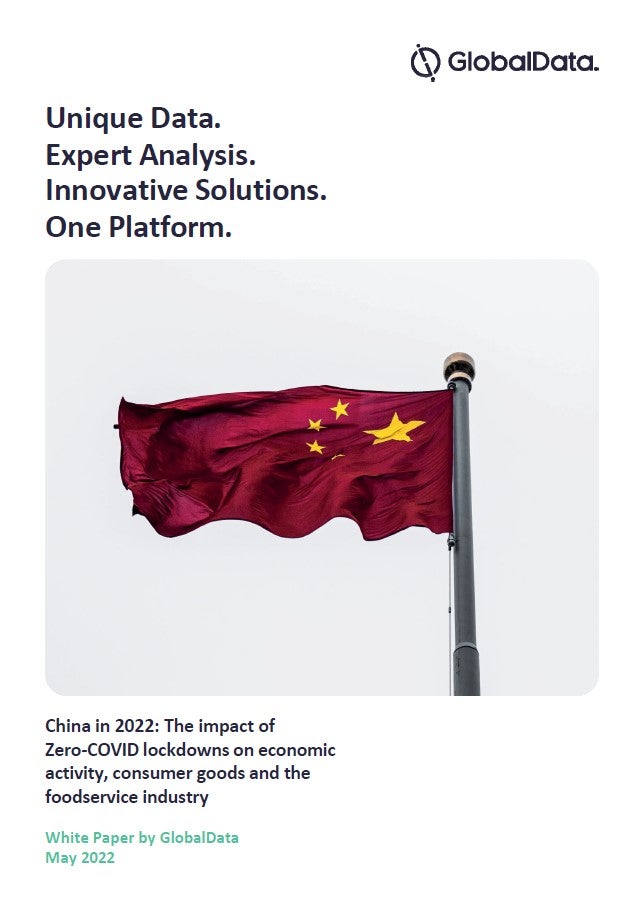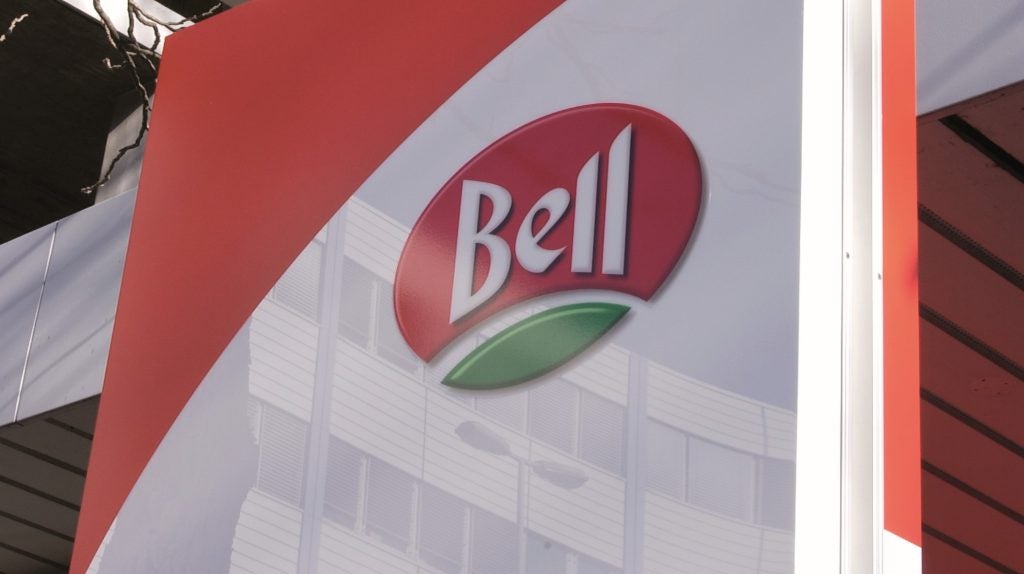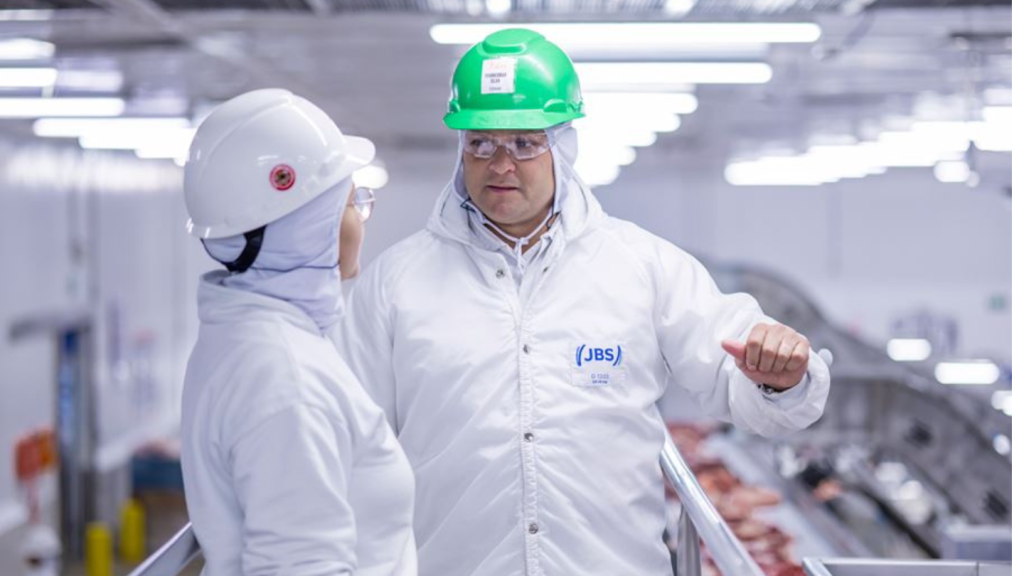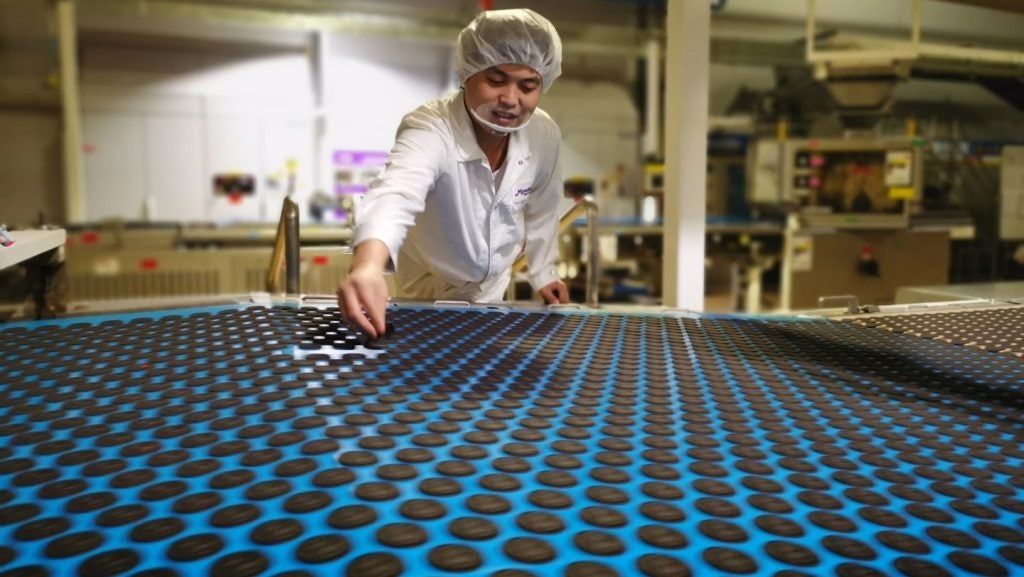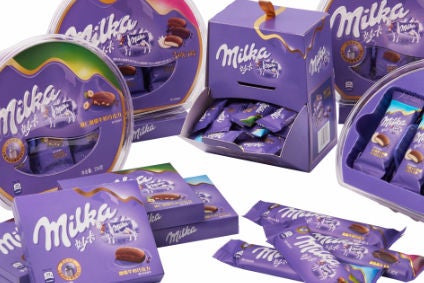
Mondelez International yesterday (28 July) reported its second-quarter and half-year numbers, leading to the US snacks giant’s shares sliding almost 3% in the New York. The Oreo maker’s operating margins and underlying earnings per share beat analyst forecasts – but growth in revenues on organic basis was weak and the company is now less certain about its forecast for annual sales. There was also plenty for Mondelez to discuss beyond the financials, notably its push into chocolate in China and its interest in Hershey.
Mondelez on-track on margins
Margins have been closely watched at Mondelez International. Last year, activist investor Bill Ackman bought shares in the business and there was speculation Mondelez could face pressure to grow sales faster or cut costs – or sell itself. The company has a target of adjusted operating margins hitting 15-16% in 2016 and is aiming for that to rise to 17-18% in the 2018 fiscal year, a goal it announced in February.
Mondelez’s adjusted operating margin in the second quarter stood at 15.2%, up 210 basis points year-on-year and higher than analyst expectations. CFO Brian Gladden pointed to the benefit of Mondelez’s zero-based budgeting on its overheads, as well as the impact of asset sales in North America. Perhaps unsurprisingly given we are now in July, Gladden said Mondelez was “increasingly confident” it could hit its margin target for 2016, although he indicated heavier investment in the current quarter meant margins would be higher in the fourth quarter than the third. He added: “We remain on track to reach our adjusted OI margin target of 17% to 18% in 2018.”
Revenue
However, Mondelez’s top-line caused furrowed brows among some analysts. Sanford Bernstein’s Alexia Howard called the 1.5% organic growth Mondelez saw in the second quarter “anaemic”. Pablo Zuanic, an analyst at Susquehanna International Group, sought to point out improving trends on volumes, although they were still down by 0.1 percentage point amid declines in Latin America and in Mondelez’s division that covers Eastern Europe, the Middle East and Africa.
Brazil was perhaps the central factor in Latin America. The macro-economic pressures seen in Brazil in recent quarters are proving challenging for a number of consumer goods companies and, speaking to analysts, Mondelez chairman and CEO Irene Rosenfeld highlighted the “aggressive competitive trade promotions” seen in the categories in which the company operates in the country. Gladden said Mondelez is looking to invest in “trade spend” in Brazil to try to make its business more competitive but added: “We see no short-term catalyst for improvement in the Brazilian economy. We’re taking actions to close selected price gaps, but we expect the market to remain challenging in terms of both revenue and margins at least through the second half.”
How well do you really know your competitors?
Access the most comprehensive Company Profiles on the market, powered by GlobalData. Save hours of research. Gain competitive edge.

Thank you!
Your download email will arrive shortly
Not ready to buy yet? Download a free sample
We are confident about the unique quality of our Company Profiles. However, we want you to make the most beneficial decision for your business, so we offer a free sample that you can download by submitting the below form
By GlobalDataSee Also:
Mondelez also tweaked its forecast for group-wide growth in sales on an organic basis in 2016. Mondelez believes its organic net revenue, which excludes factors like M&A and exchange rates, will grow by approximately 2% this year. In May, the company had set out an estimate for growth of “at least 2%”. Gladden said: “This reflects the increasing challenges we’re seeing in global categories and includes about 100 basis points from revenue management actions.”
Mondelez has indicated in recent quarters its belief it can manage its trade spend more efficiently but, with its plan to re-invest in markets in like Brazil to boost sales, Gladden was asked whether the company would feel a benefit from its work on revenue management yet, or whether the fruits of that labour would appear in the years to come. The Mondelez finance chief said: “I wouldn’t really change anything from what we’ve said. It continues to be a large spend for us and a big opportunity. We’ve mobilized resources and analytically are better understanding our trade spend now on a global basis. The activity and the initiative is on track. And I think you’ll always see us selectively reinvest trade spend where we have to where we think that’s a prudent decision with good ROI.”
Biscuits
Mondelez’s US biscuits business is set to be another part of its operations that will see more spending to try to withstand some aggressive competition. Rosenfeld pointed out the company’s share of the US biscuit market had only been slightly eroded but conceded the scale of that part of its business had had a wider effect on its performance.
“We’re only down 0.3 points of share in US biscuits but given the size of that market, it has a profound impact on our overall performance. And so there’s no question that getting that US biscuit business back growing again more significantly is a critical piece of our overall performance,” Rosenfeld said. Gladden, meanwhile, said the Belvita maker was investing in direct-store delivery in the US to try and improve the performance of that side of its business.
Rosenfeld added: “We saw some very aggressive trade spending from some of our competition. It is not helping to grow the category, but we certainly are responding. And I would tell you even in the early couple of weeks in July we’re starting to see that business come back.”
Hershey
The Mondelez chief was more reticent on the company’s interest in Hershey. On the conference call with analysts, Rosenfeld confirmed the company had tabled an offer for the Reese’s maker but declined to comment further. “While I can confirm that we did make an offer to Hershey, as you would expect regarding any potential M&A activity, we have no additional comments to make,” Rosenfeld said.
Bryan Spillane, an analyst at Bank of America Merill Lynch, asked about Mondelez’s strategy for capital allocation and sought to elicit why Mondelez had decided it would try to close such a sizeable transaction. Rosenfeld replied: “Our capital allocation strategy has not changed. And as I said in my remarks, we have no additional comments on the Hershey situation.”
At Sanford Bernstein, Howard suggested Rosenfeld’s refusal to discuss Hershey meant Mondelez could be ready to return to the table. “We are concerned that management’s silence on the Hershey issue might indicate they plan on making a new, higher bid. We would view any such bid negatively, especially if they turned to tax-inefficient asset sales to limit equity issuance and thus prevent a shareholder vote,” Howard said today.
For Sanford Bernstein, a move for Hershey would lead to an increase in the proportion of Mondelez’s portfolio made up by sugary snacks, which, the bank argues, would be against the tide of rising consumer interest in the US in the links between diet and health.
China
Meanwhile, alongside the publication of its second-quarter and half-year results yesterday, Mondelez announced it is set to build up its presence in a sector where Hershey has found the going tough – China’s chocolate market.
Mondelez exports a “very small amount” of chocolate under brands including Cadbury and Toblerone in China but,from September, it will be selling locally-manufactured Milka in the country.
China’s chocolate market can be difficult to crack, as shown by the recent travails of Hershey in the country. Hershey’s operations in China have suffered in recent quarters. The US company’s 2013 investment in local business Shanghai Golden Monkey was designed to boost Hershey’s operations in the country but the performance of the asset has been below expectations. Last year, Hershey booked an impairment charge on Shanghai Golden Monkey, while having to downgrade its sales forecasts for the business part-way through the year.
In the first quarter of 2016, Hershey’s sales in China tumbled by around 35%. Hershey insisted it had expected its sales in China to fall during the period as the company lapped the slowdown that occurred after the 2015 Chinese New Year sell-in. When Hershey announced its results for the first quarter in June, it revealed China’s chocolate category had seen sales fall 10% year-on-year, a faster rate than it had expected.
On yesterday’s conference call, Rosenfeld fielded a number of questions on the move to launch Milka and, while she declined to quantify the size of the opportunity she believes Mondelez can capture in China, insisted the company can prosper.
“I’m not going to give you our business proposition but we see it as a very attractive market. And frankly the opportunity, many of the players in that market have not performed particularly well of late, and so we see it as a real opportunity for us to take some leadership and get the category growing faster,” Rosenfeld said.
E-commerce
Yesterday Mondelez again sought to emphasise the potential it sees in selling snacks online. China is one of the markets in which Mondelez is investing in building its online presence. In April, the company announced a tie-up with Chinese e-commerce retailer Alibaba, while yesterday Rosenfeld pointed to other recent initiatives in the US and the UK.
“Early results are very encouraging. In the first half, we grew our e-commerce revenue by more than 30%. Looking ahead, our goal is snacking leadership in e-commerce and over $1 billion in sales by 2020,” she said.
BMO Capital Markets analyst Ken Zaslow questioned how much of those $1bn in sales would add to Mondelez’s existing business. Not all of it, Rosenfeld acknowledged, but she sought to underline where Mondelez saw opportunities.
“it’s early days, Ken, and so I think it’s hard to tell you exactly how incremental it is as consumers shift their behavior from more traditional channels. It’s not going to be 100% incremental. But there’s no question that we have the opportunity as we look at the kinds of items were offering in those channels as well as the nature of the consumption occasions that the consumer is using those channels for, be it gifting or subscription opportunities, that clearly will be incremental to our base business. And so it’s one of the reasons we’re so encouraged about that opportunity and have chosen to invest significantly behind it.”

